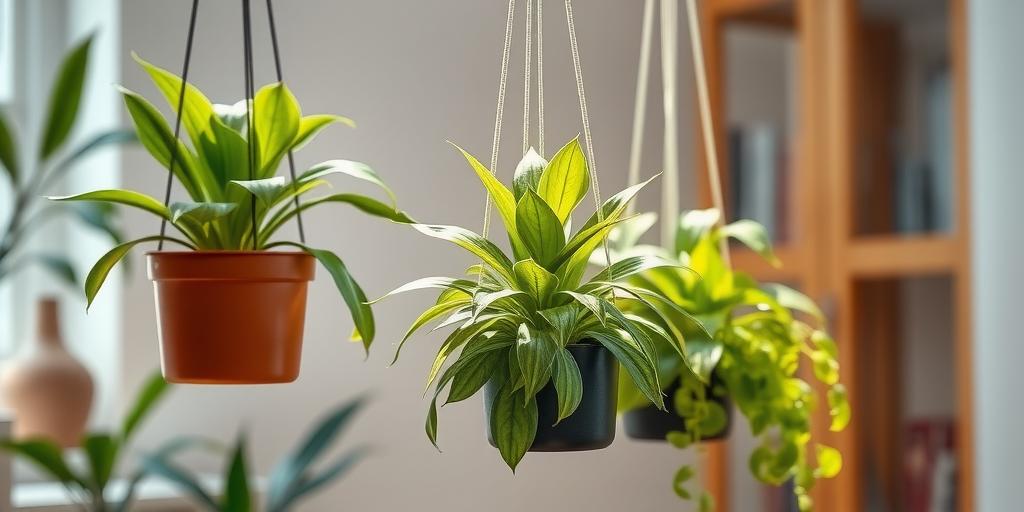
Best Low Light Hanging Plants for Beginners: Easy & Stunning Picks
Discover the best low light hanging plants for beginners! These easy-care, shade-loving plants will brighten up any dim corner—perfect for new plant parents.
Introduction
Struggling to find the perfect plants for that dark corner in your home? Don’t worry—you don’t need a green thumb to keep low light hanging plants thriving! Whether you live in an apartment with limited sunlight or just want to add some greenery to a dim hallway, these beginner-friendly plants are resilient, beautiful, and easy to care for. Did you know some plants can survive with just fluorescent light? Let’s dive into the best low light hanging plants that will transform your space effortlessly!
Why Choose Low Light Hanging Plants?
If you’re looking to bring some greenery into your home but don’t have much natural sunlight, low light hanging plants are the perfect solution. These plants thrive in dimmer conditions, making them ideal for apartments, offices, or rooms with small windows.
Ideal for Spaces with Minimal Natural Sunlight
Not every room gets bright, direct sunlight—some might only have a small north-facing window or rely on artificial lighting. Low light hanging plants adapt well to these conditions, so you don’t have to worry about them wilting from lack of sun.
Perfect for Beginners Due to Low Maintenance
If you’re new to plant care, these plants are forgiving. They don’t need constant attention, frequent watering, or perfect lighting. Many of them can bounce back even if you forget about them for a while.
Adds Vertical Greenery Without Taking Up Floor Space
Hanging plants are great for small spaces because they grow downward, adding life to your walls or ceilings without cluttering tabletops or floors. They’re perfect for studio apartments, dorm rooms, or any area where space is limited.
Helps Purify Indoor Air Naturally
Many low light hanging plants, like pothos and spider plants, are known for their air-purifying qualities. They help filter out common indoor toxins, making your space healthier without needing an air purifier.
Top Low Light Hanging Plants for Beginners
If you’re ready to start your hanging plant collection, here are some of the easiest and most resilient options:
Pothos (Epipremnum aureum)
Pothos is practically indestructible—it thrives in low light, grows quickly, and can survive occasional neglect. Its trailing vines look beautiful in hanging baskets, and it comes in different varieties like golden pothos or marble queen.
Spider Plant (Chlorophytum comosum)
Spider plants are hardy and pet-friendly, making them a great choice for homes with animals. They produce tiny “pups” (baby plantlets) that you can propagate to grow even more plants.
Philodendron Heartleaf (Philodendron hederaceum)
This plant has lovely heart-shaped leaves and long, trailing vines. It adapts well to low light and only needs occasional watering. Plus, it grows quickly, giving your space a lush, jungle-like feel.
Peperomia (Peperomia spp.)
Peperomias come in many varieties, with colorful and textured leaves. They stay compact, making them perfect for small hanging pots. They’re also low-maintenance—just water when the soil feels dry.
ZZ Plant (Zamioculcas zamiifolia)
The ZZ plant is nearly impossible to kill. It tolerates low light, infrequent watering, and even forgetful owners. Its glossy leaves add a modern touch to any room.
String of Hearts (Ceropegia woodii)
This delicate trailing plant has tiny heart-shaped leaves that look stunning in hanging planters. It prefers bright, indirect light but can adapt to lower light conditions with slower growth.
Care Tips for Low Light Hanging Plants
Even though these plants are low-maintenance, a little care goes a long way in keeping them healthy and thriving.
Watering: Avoid Overwatering
Most low light plants prefer their soil to dry out slightly between waterings. Overwatering is the quickest way to kill them—stick your finger in the soil; if the top inch is dry, it’s time to water.
Light Needs: Indirect or Artificial Light Is Enough
While they can survive in low light, they still need some brightness. Place them near a window with filtered light or under fluorescent office lighting. Avoid complete darkness.
Fertilizing: Feed Occasionally
During the growing season (spring and summer), use a diluted liquid fertilizer every 4-6 weeks. In winter, most plants go dormant, so you can skip fertilizing.
Pruning: Encourage Bushier Growth
If your plant starts looking leggy (long stems with few leaves), trim the vines back. This encourages new growth and keeps the plant looking full.
Pest Control: Keep Leaves Clean
Dust can build up on leaves, blocking light and attracting pests. Wipe them gently with a damp cloth every few weeks to keep them healthy.
Best Places to Hang Low Light Plants
Not sure where to put your new hanging plants? Here are some great spots:
Bathrooms (Great for Humidity-Loving Plants Like Ferns)
Bathrooms often have higher humidity, which some plants love. If your bathroom has even a little natural light, try hanging a pothos or fern there.
Dark Corners of Living Rooms or Bedrooms
Brighten up dull corners with a trailing philodendron or ZZ plant. They’ll add life to spaces that usually feel empty.
Office Spaces with Fluorescent Lighting
Many offices lack natural light, but fluorescent bulbs can still support low light plants. A spider plant or pothos on a shelf can make your workspace feel more inviting.
Shelves or Ceiling Hooks for Trailing Vines
Hang plants from ceiling hooks or place them on high shelves to let their vines cascade down. This works especially well with string of hearts or ivy.
Common Mistakes to Avoid
Even easy-care plants can suffer if you make these mistakes:
Overwatering (Leading to Root Rot)
Too much water is worse than too little. Always check the soil before watering—if it’s still damp, wait a few more days.
Placing in Complete Darkness (Some Indirect Light Is Still Needed)
While these plants tolerate low light, they still need some brightness. A completely dark closet or basement won’t work.
Using Pots Without Drainage Holes
Excess water needs somewhere to go. Always use pots with drainage holes to prevent soggy roots.
Ignoring Dust Buildup on Leaves
Dust blocks light absorption. Wipe leaves occasionally to keep them clean and healthy.
By choosing the right plants and following these simple care tips, you can enjoy lush, green hanging plants even in the dimmest corners of your home!
Conclusion
Low light hanging plants are the perfect way to bring life into dim spaces without the hassle of high-maintenance care. From the hardy Pothos to the elegant String of Hearts, there’s a plant for every beginner. Ready to start your indoor jungle? Pick your favorite from our list and watch your space transform!
